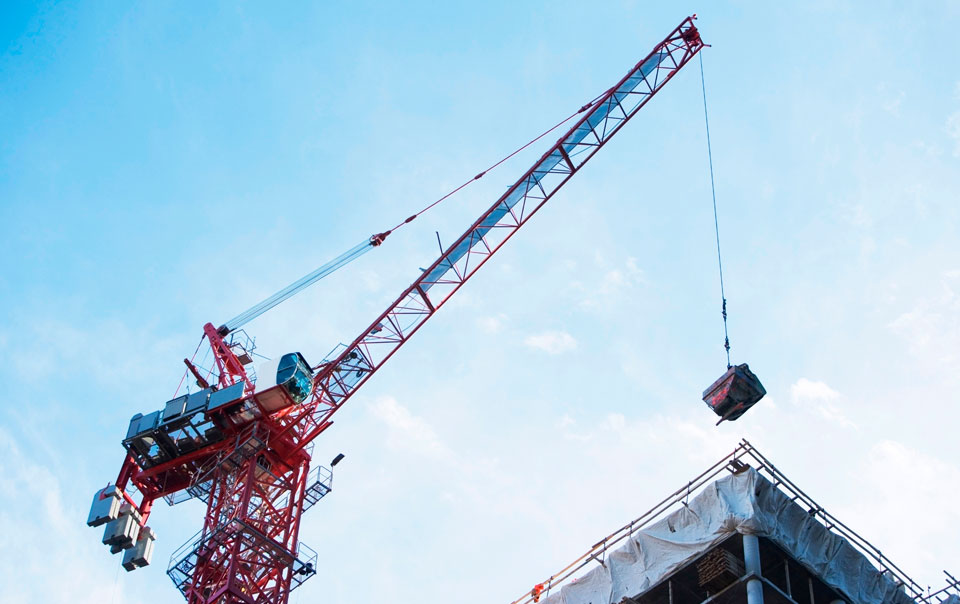As some construction projects become more complex, the demand for lifting larger loads grows, which is impacting the size of cranes and the complexity of lifts. Experience alone may not be enough to operate cranes safely and in compliance with the applicable regulations and standards. Lifting operations depend on a team approach, careful lift planning and continued training to stay current with industry rules and regulations.
Typically the most expensive and productive pieces of equipment at a construction site, cranes also can be the most dangerous without proper training, preparation and management. Crane safety includes both basic and advanced planning as well as continuous monitoring of changing site conditions.

Following are five key questions to consider as you develop a lift plan.
- What do you expect to happen?
- What might go wrong or interfere with this outcome?
- What is the likelihood that something might go wrong?
- What are the possible consequences if something goes wrong?
- What controls can be implemented to mitigate the risks involved?
Lift Planning: Not Just for Heavy Loads
“Whether the load is only a few hundred pounds or many thousands of pounds, proper planning is essential to help ensure that the work gets completed safely, without incident,†says Hank Dutton, a Travelers Risk Control professional who is a Certified Lift Director and regularly conducts crane safety courses.
Because every situation can be unique, a lift plan should be created anytime a crane lifts or moves a load. At a minimum, the plan should consider the weight of the load, the crane’s boom length and the radius where the load will be placed. While verbal plans might be sufficient for some lifts, more complex lifts should have written plans.
Lifts requiring extra care because of the small margin of error or serious consequences of any mistake are commonly referred to as “critical lifts.†Such lifts might include loads that are expensive or difficult to replace, loads that exceed a predetermined percentage of the rated capacity chart or lifts for which multiple cranes are attached to a single load. Lift plans should be reviewed by all members of the team expected to execute the lift, including, but not limited to, crane operators, riggers, signal persons, site supervisors and lift directors.
Some Considerations When Planning a Lift
Ground Conditions
- Check the grade and the soil’s bearing capacity where the crane will travel and be set up. The ground must be level to within the crane manufacturer’s specifications and able to resist the forces imposed by the crane and load weights.
- Are there any excavations, underground structures or utilities nearby that could affect the stability of the ground? If so, their effect on the crane operations must be evaluated and modifications made as necessary.
- Consider using blocking/mats under all crane setups to help distribute the crane and load weights to a larger surface area.
Power Lines
- Since contact with overhead power lines continues to be a leading cause of death involving cranes, those working around power lines should have a thorough understanding of the pertinent Occupational Safety and Health Administration (OSHA) regulations.
- OSHA requires special precautions be taken when assembling/disassembling cranes, during operations, when operating within the minimum clearance distance and when traveling with a crane near power lines.
Weather
- Determine in advance which weather conditions would postpone or cancel a lift (e.g., wind speed, visibility, lightning or rain).
- Most crane manufacturers do not account for wind on the lifted load or crane boom, so the crane operator and lift director must account for this. Remember that wind speeds can vary dramatically with height. Wind can cause the crane to become overloaded if the load moves to a longer radius or the crane is side-loaded. Wind can even cause the load to swing back into the boom, causing structural damage or even a collapse.
- Consider the effects that cold temperatures can have on the lift. Loads could freeze to the ground or ice could form on the crane boom creating additional unanticipated weight to the crane and its components.
Conditions can change throughout the course of a day, so make sure your team checks and rechecks the site for hazards and unsafe conditions before and during crane operations. If anything changes or does not go according to the plan, halt operations and regroup in a meeting to discuss.
